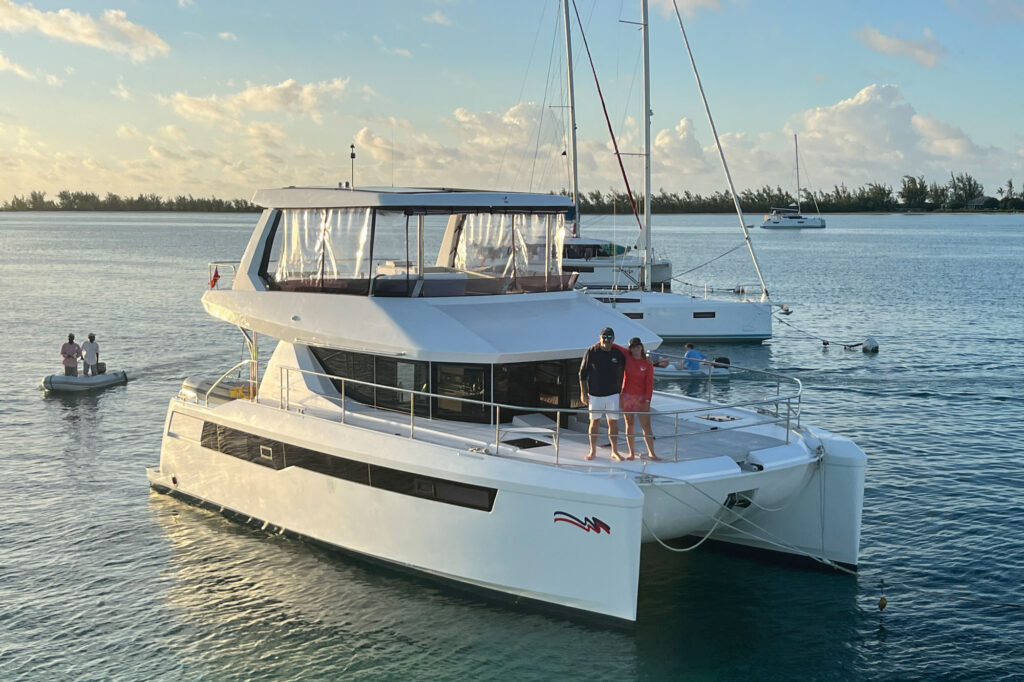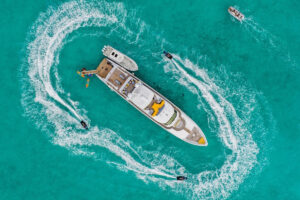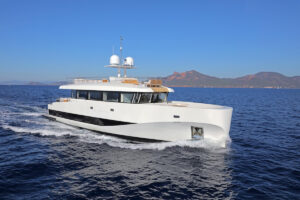
It was a sensational day for sailing, with a solid southwesterly breeze pumping over the aft quarter of our 42-footer, just ideal for a downwind romp under a spinnaker. I was even heading north on the Intracoastal Waterway with my sailing mentor, Dan Spurr, who enjoys a good sail as much as I do. But as I wafted on about how perfect it was for a kite, he helpfully pointed out one very important thing: There was no mast on his Grand Banks trawler. I was a sailor without a stick.
I was confronted with what is or isn’t “sailing” years ago while covering a long-distance single handed yacht race. A famous solo sailor had just completed his offshore qualifying sail in impossible fashion, as I was well aware he hadn’t had enough breeze to knock off so many miles in such a quick time. He had to have kicked on the engine. When I confronted him, he quickly pooh-poohed me with a comment that still resonates today: “Well, the Queen Mary ‘sails’ without a mast, doesn’t it?” I failed to come up with a witty retort.
I consider myself an all-around waterman and have always contended that it didn’t matter the conveyance, as long as it got you afloat. My personal fleet these days is certainly eclectic: two surfboards, three kayaks, a good rowboat, an inflatable dinghy and two sailboats—a 23-foot one-design racer and a 36-foot cruising boat. They all get plenty of use. But note what’s missing in my nautical quiver: a powerboat.
Read More from Herb McCormick: And The US Sailing Capital Is?
The sailing-without-a-stick matter came to a head recently on a cruise through the British Virgin Islands. It was December, and the so-called “Christmas trade winds” were roaring on a daily basis, ideal conditions for windy reaches under sail across the Sir Francis Drake Channel. The only problem? I was once again without a rig.
Amazingly enough, I did not have a problem with it. Quite the opposite. It was fantastic.
The humor columnist Dave Barry came up with a pretty good summation of how to operate a sailboat: “1. Figure out which way you want to go. 2. Whichever way it is, do not aim the boat in that direction. 3. Aim the sailboat in some other direction. 4. Trust me, this is the way sailboaters do it. 5. They are heavy drinkers.”
The drinking part is debatable; otherwise, Barry pretty much nailed it. You cannot sail directly into the breeze. You need to tack the boat to make progress to windward. I was reminded of this point on my BVI charter with friends and colleagues on a couple of power cats from The Moorings. Everywhere we wished to go—first to Virgin Gorda, then onward to low-lying Anegada— was directly upwind. That was not the least bit of a problem on the twin-engine cats. We just leaned on the throttles, and away we went. And all I could think was, I could get very used to this.
Ironically, on a couple of days when the trades kicked in at a solid 25-plus knots, there was actually too much wind for comfortable sailing, and the sailboats underway were doing so in the same manner as us: under power. The big difference was in horsepower. With their smaller engines, they struggled to make 8 knots, while we zipped here and there at an easy 15 knots. Guess who got to their respective destinations quicker, thus scoring the better mooring balls in each anchorage?
I’m not quite ready to ditch my sailboats, but I certainly experienced a revelation in the BVI. For charter vacations, power may be the way to go. At the end of the day, you skip all of Barry’s annoying details. But you can still have a drink.









